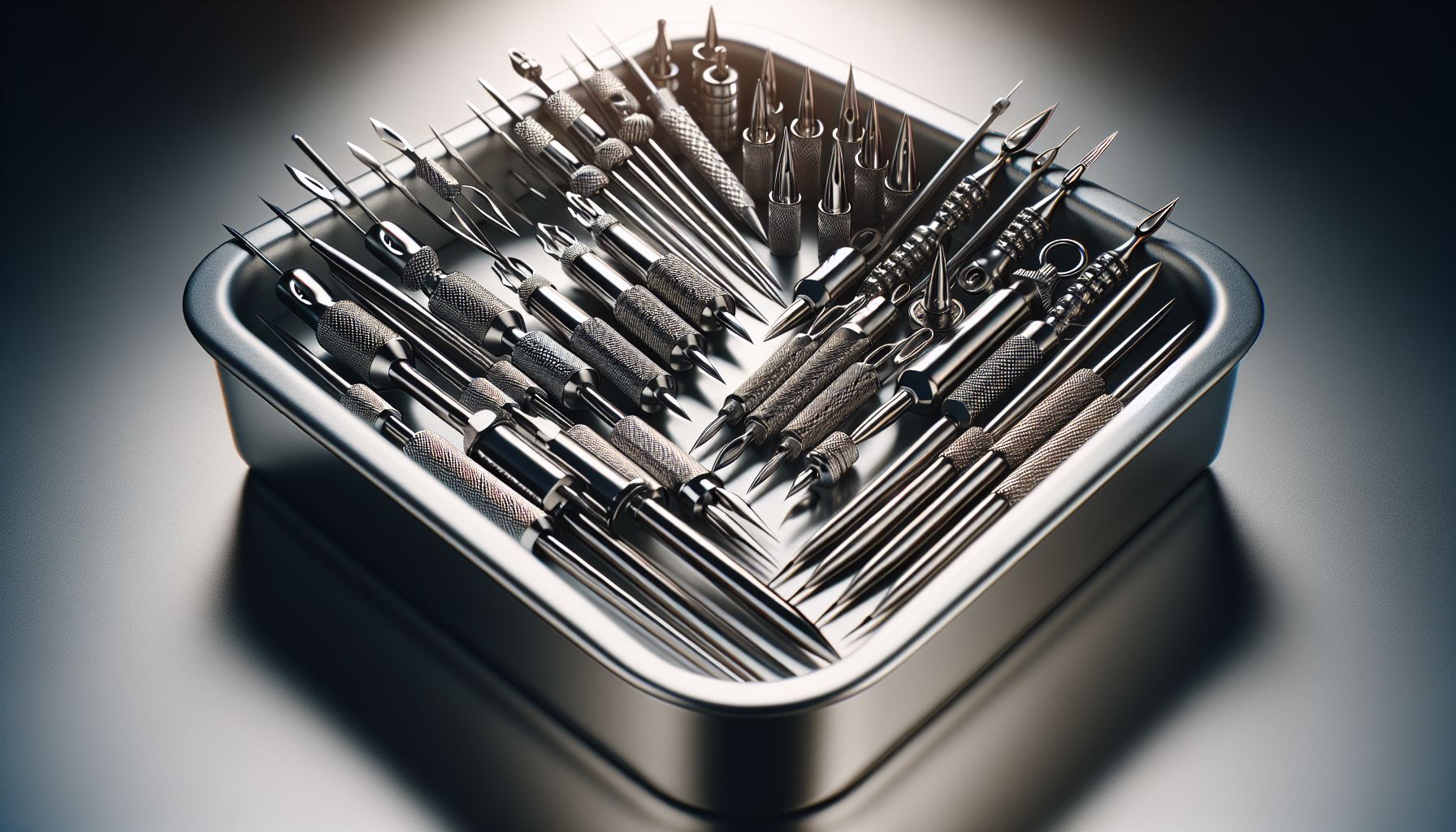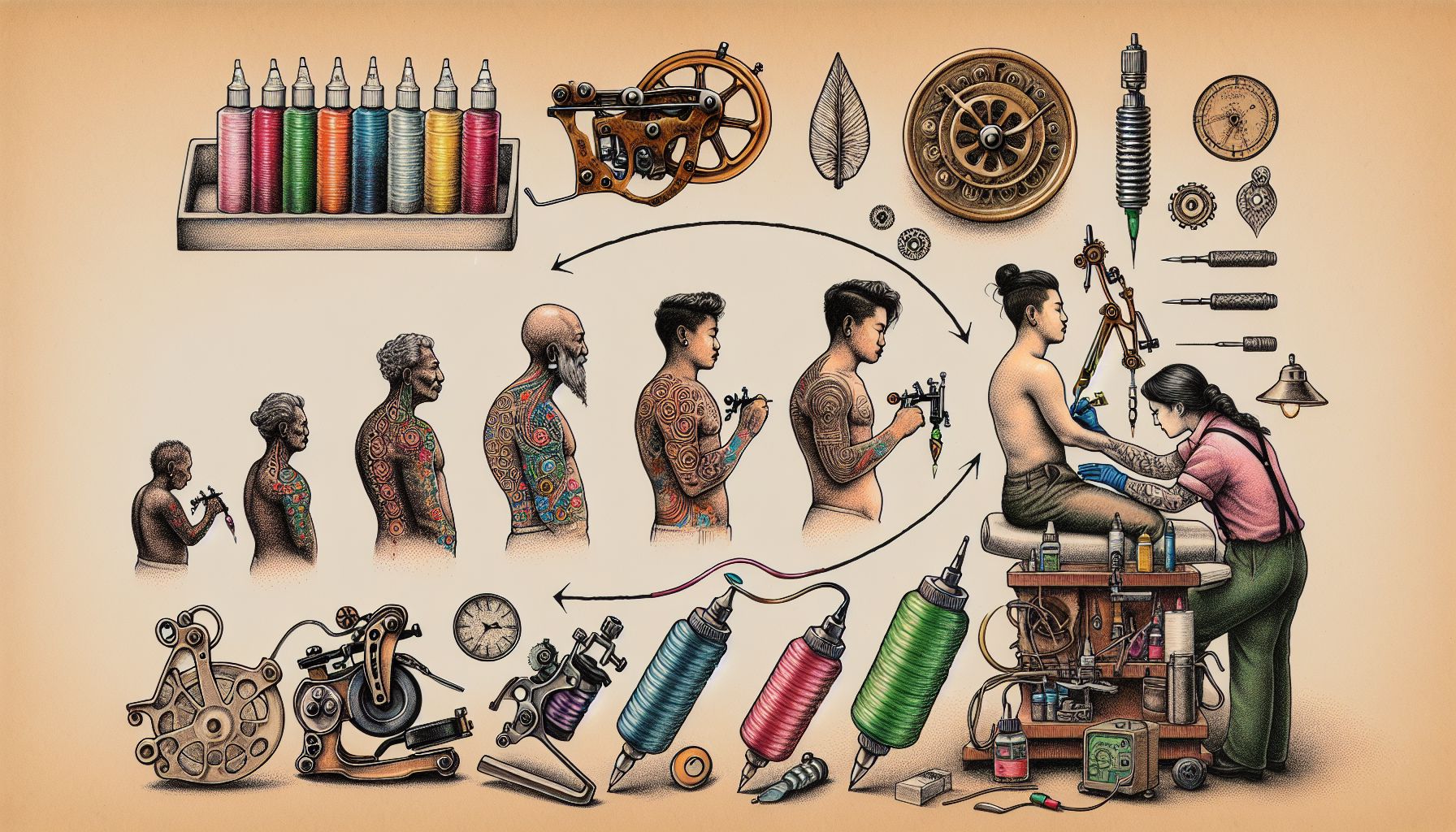The heart of any tattoo artist’s toolkit isn’t the ink, the machine, or the latest gadget — it’s the humble tattoo needle. Often overlooked yet critically important, the needle is where art meets skin, the very point where creativity is etched into permanence. From lining to shading, the choice of tattoo needles can greatly influence an artist’s work, and today’s tattoo supply market offers a dizzying array of options that can either elevate an artist’s work or lead to disappointment and discomfort.
When I first started out in the tattoo industry, the options were scarce. We had standard needles that we sometimes tweaked ourselves for better performance. Today, however, the range of needles available for purchase is vast—different configurations, diameters, tapers, and materials—all designed to offer precision and control across various tattooing techniques. It’s from this wealth of experience and witnessing the evolution of the tattoo needle that I offer my insights on one of the most critical tattoo supplies today.
The Anatomy of a Tattoo Needle
Tattoo needles aren’t just simple pricks. Each one comprises several components that work together seamlessly. The primary types of needles used in tattooing are round, flat, and magnum. Round needles are ideal for outlining and detailed work, flat needles for bold lines and shading, and magnum needles for packing color and extensive shading with less skin trauma.
Within those categories are various subtypes—whether the needles are configured for tighter or looser groupings, textured for more ink retention, or made with a longer taper (sharpness) to penetrate the skin more easily. Each configuration brings unique traits that benefit the skin differently, something I’ve learned through years of practice.
Evolution of Tatoo Needles
From the early days of customized needle configurations soldered by the artists themselves, we’ve come a long way in needle technology. Manufacturers now offer pre-made, sterile, and individually packaged needles that ensure safety and consistency. The evolution of needle manufacturing has not only been a boon in terms of hygiene but also in artist creativity—allowing for finer lines, more detailed shades, and less invasive procedures.
Choosing the Right Tattoo Needle
Most veteran artists remember the days of ordering a new type of needle out of curiosity or need and experiencing that ‘Eureka!’ moment when it glided through the skin like butter or gave the shading a soft, airbrushed quality. Every tattoo artist develops a preference for certain types of needles, often through trial and error.
When choosing needles from a tattoo supply store, consider the application. For fine line work, using a small round liner is typical, while larger groupings can create thicker, more aggressive lines. For shading, curved magnums can offer a gentler, more nuanced shade without leaving harsh lines. Always pay attention to the diameter, known as the gauge, as well. The finer the diameter, the less trauma to the skin, which is perfect for delicate, detailed work.
The Role of Quality in Tattoo Needles
Quality cannot be understated in the world of tattoo needles. Cheap, poorly-made needles can cause more skin trauma, lead to blowouts, or simply not deposit the ink correctly. High-quality needles from reputable suppliers maintain their sharpness, are burr-free, and have precise configurations that contribute to the artist’s control during the tattoo process. When selecting needles, I always pay close attention to the quality control measures taken by manufacturers, which often includes information on how the needles are made and tested.
Personal Experience with a Game-Changing Needle
I remember the first time I switched to a particular brand of cartridge needles that promised better ink flow and stability. The hype was real—the difference in my line work was immediate. The needle moved with me, as if reading my intentions, and the resulting tattoos healed faster, with more clarity in lines and shades. This kind of breakthrough is what we live for as tattoo artists, a way to push our art forward. It’s experiences like this that make it absolutely crucial to remain open-minded and to keep testing new supplies that hit the market.
Incorporating Aftercare in Needle Choice
Aftercare is an essential part of the tattoo process, and the right needle choice can make a big difference in healing. Rough needles can lead to overworked skin, prolonging the healing process, and increasing the risk of infection. A tattoo is only as good as it heals, and no artist wants their work to be remembered for the wrong reasons. It is vital to consider how a needle affects the skin not just during the tattoo process, but also after.
Conclusion: The Foundation of Great Tattooing
As every artist knows, a tattoo is only as good as the tools used to create it. Needles form the foundation upon which all tattoos are built—they are the point of contact that layers ink into skin to bring art to life. For artists and shops looking to make informed decisions about their tattoo supplies, I cannot emphasize enough the importance of investing in high-quality tattoo needles.
Through personal anecdotes and years of experience, I’ve learned that the right needle can elevate an artist’s work from good to great. It’s an exciting time to be part of the tattoo industry, with innovations that continue to improve our craft. As the industry continues to evolve and grow, so will the tools we use—including the ever-critical tattoo needle. Take the time to understand the nuances of these essential tattoo supplies, and they will serve you well in every line, shade, and color you create.



